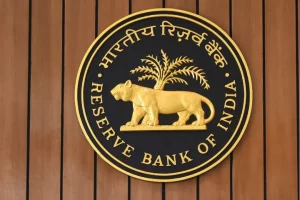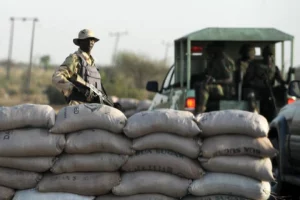Last Sunday, Union Environment Minister Prakash Javadekar tweeted: ‘Happy to note that India has added two more Ramsar sites. Lonar lake in Maharashtra, the only crater lake of country, and Sur Sarovar, also known as Keetham lake, in Agra. "Wetlands are the world's natural water filters and one of the most productive ecosystem on the planet," said Prakash Javadekar. India now has highest number in South East Asia – 41 designated wetlands that include swamps, marshes, billabongs, and lakes among others from various states.
The number of protected wetlands in India under the Ramsar Conventions increased by 50 per cent in just one year, taking the number of such sites of international importance from 27 in 2019 to 41 this year. Ramsar sites are designated wetlands that are deemed to have international importance.
The official name for the convention is the Convention on Wetlands of International Importance, especially as Waterfowl Habitat is the first and only global treaty for the conservation of a particular ecosystem. The Convention was signed on 2nd February 1971 in the Iranian city of Ramsar. This is where it gets its name from – The Ramsar Convention.
<img class="wp-image-27151 size-full" src="https://indianarrative.com/wp-content/uploads/2020/11/P5-Red-Crested-Poachards.jpg" alt="P5-Red-Crested-Poachards.jpg" width="1000" height="620" /> Red crested poachards (Photo: Mrityunjoy Kumar Jha)It has 171 member states including India. The advantages of being declared a Ramsar site are that it will help in the conservation and wise use of the wetland, receive national and international cooperation for conservation and management, receive central funding, boost tourism, generate employment for locals and bring economic benefits for surrounding areas due to increased tourism and create awareness for conservation of other wetlands in the state.
The first two wetlands of India to get included in the Ramsar list were Chilka lake in Odisha and Keoladeo birds sanctuary in Rajasthan in 1981. In 1993 both were put in the list of Montreux record due to various problems. Later in 2002, Chilka was removed from the list as the problems were tackled by govt actions.
But the Keoladeo Bird Sanctuary is still in the Montreux Record due to severe stress on its wetlands that is causing harm to the flora and fauna. The Montreux Record is a register to highlight specific wetlands of international importance that are facing immediate challenges. It is maintained as part of the List of Ramsar Wetlands of international importance. A National Park, World Heritage and Ramsar site, the Keoladeo National Park (KNP), formerly known as Bharatpur Ghana Birds Sanctuary, locally it is still known as ‘ghana’ – a dense forest. It acquired its name ‘Keoladeo’ due to presence of the Lord Shiva temple inside the park.
<img class="wp-image-27152 size-full" src="https://indianarrative.com/wp-content/uploads/2020/11/P2-Flemingos-at-KNP.jpg" alt="Flamingos at KNP" width="1000" height="666" /> Flamingos at the Keoladeo National Park (Photo: Mrityunjoy Kumar Jha)Keoladeo with its lakes and wetlands is spread over an area of 28.73 sq km. It was artificially created by the Maharaja of Bharatpur, Suraj Mal in the 19th century. By building small dykes and dams and diverting water from an irrigation canal, he converted the low-lying area into a fine wild fowl shooting preserve. In a few years, the new wetland surrounded by marginal forests was able to support thousands of water birds.
It is the wintering ground of an enormous congregation of migratory waterfowl and home to resident avifauna. It is the only wintering ground for the central population of the rare and highly endangered Siberian Crane (Grus leucogeranus) in India. A large number of breeding colonies of fish-eating birds occur in the monsoon and autumn months. The Park provides an opportunity to birders to watch birds from close proximity. Dr. Salim Ali in his autobiography, <em>The Fall of a Sparrow</em>, describes, 'What gives to the 'Ghana' its unique distinction as a bird-watchers’ haunt is not only the fantastic concentration and diversity of species of both resident and migratory water birds at the appropriate seasons, but the uncommonly extended period of half-a-year or more at a stretch over which bird watching can be enjoyed here.'
The Park was the last known wintering ground in India of the western population of Siberian crane (Grus leucogeranus). Bird counts in the 1960’s showed several hundred birds, but the numbers started to decline. Despite reaching a decade-high total of 41 birds during the winter of 1984-85 numbers have been steadily decreasing and in the winter of 1993 and 1994, none were observed. In 1996, four birds wintered in the Park, and in 1997 two adults and a young bird were seen. The last pair disappeared in 2002.
<img class="alignnone size-full wp-image-27153" src="https://indianarrative.com/wp-content/uploads/2020/11/P6-bronze-winged-Jacana-KNP.jpg" alt="P6-bronze-winged-Jacana-KNP.jpg" />
Matters went from bad to worse – draughts, consistent low monsoons, along with water politics, turned this once verdant land into a virtual graveyard. Fishing cats disappeared and turtles lay thrashing in diminishing pools. From the nearly 400 species that the Park boasted of, the numbers crashed to 48 in early 2005, and the Park that saw several hundreds of thousands birds in a normal season, barely held 4,000 in 2005. The Park was almost ‘dead’. Fortunately, in 2008, the rain god obliged and with proper planning by the state and the Central governments, the park was well on its way to regaining its lost glory.
Now, dried pools are full of water, bringing with it hopes of a millions birds who had forsaken their right to give birth, to perpetuate their lineage. Their right to live. Painted storks, openbills arrived in droves colonising the kadam trees. Darters, ibis, cormorants, herons, egrets, eagles, falcons, follow and squabbling over the prime piece of the property for their nesting. Jacanas sprout long tails and lay eggs on floating leaves and the sarus dances for the pure joy of it. Paradise has returned to the Garden of Eden.
Soon, visitors from faraway has started landing to seek food and shelter and myriad wings have covered the waters of Bharatpur. Winter is here and one can witness arrival of birds in large numbers signifying the start of migration. It’s the annual dispersal of birds from the northern hemisphere to the Indian subcontinent. While shore birds like waders and ducks and raptors come from Siberia and Russia, birds like the European flycatcher, brown-breasted flycatcher and barn swallow come from Europe. All can be seen in KNP. Its now home to over 400 bird species. While some like the sarus crane can be spotted year around, others migrate from Siberia, Europe and China during winter.
<img class="wp-image-27162 size-full" src="https://indianarrative.com/wp-content/uploads/2020/11/P8-Pond-Heron-enjoying-meal-KNP.jpg" alt="" width="856" height="1000" /> Pond heron enjoying meal at the Keoladeo National Park (Photo: Mrityunjoy Kumar Jha)KNP is now coming back to its pristine glory, the first step towards consolidating the Bharatpur inheritance today must surely involve a return to the wisdom of the past, inherent in the 18th century wisdom of Raja Suraj Mal of Bharatpur who created the the Ajan Bund and Bharatpur and which was articulated 200 years before him by Francis Bacon: “Nature, to be commanded, must be obeyed”..




















